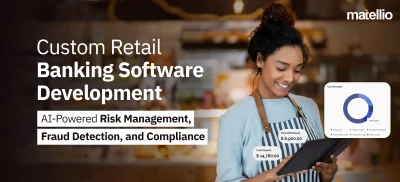
Today’s world is powered & driven by technological innovations. Everything seems to be possible with just a few clicks on the mobile phone, whether ordering lunches and dinners, doing online shopping, or booking a cab, amongst others.
Due to technological advancements, payment methods have also become digital in recent years, necessitating the development of digital wallets. The need for digital payment apps is rapidly increasing. Furthermore, in the COVID-19 outbreak, digital wallet apps are critical since they allow for zero-contact payments. The pandemic boosted the market’s focus on digital payments. Investing in digital wallet app development as a business or startup can undoubtedly provide you with remarkable rewards.
But the question is how to develop a digital wallet app? Don’t worry! We got you covered!
Through this blog, we’d like to share the essential information for businesses wishing to develop digital wallet apps.
In this blog, we’ll cover everything you need to know about digital wallet app development, like benefits, key features, types, and how to develop a custom digital wallet app for your business.
So, let’s start with,
What is a Digital Wallet?
A digital wallet is a solution that acts as an electronic counterpart of a wallet, storing credit and debit card information and allowing customers to make purchases using their mobile phones. It keeps track of users’ payment information for multiple payment methods on dozens of sites and other things like gift cards and several other things. Initiatives are taking place around the world to promote digital payment choices, increase smartphone usage, and boost e-commerce sales.
Based on the functionalities, there are many types of digital wallets. Let’s move forward and discuss,
Types of Digital Wallets
- Closed wallets
The funds in a closed wallet can only be used to process transactions with the wallet’s issuer. The money from refunds, returns, and cancellation is kept in the wallets. E.g., Amazon pays. - Semi-closed wallets
Users can process transactions with merchants and venues listed in a semi-closed wallet. Although the wallets’ coverage region is limited, they can be used for online and offline transactions. - Open wallets
Open wallets are issued by banks or businesses that have collaborated with banks. Users with open wallets can use them for any and all transactions that a semi-closed wallet allows, including withdrawals from banks and ATMs, as well as fund transfers.
Read More: Guide to Custom Retail Software Solutions
Why Must You Invest in Digital Wallet App Development?
When a business uses a digital wallet, all of the costs associated with generating, mailing, and tracking paper checks are gone. Initially, only major businesses such as PayPal dominated the market, but it is now crowded with wallets from Walmart, Apple, Google, Samsung, and Starbucks.
This demonstrates the tendency that every other significant business that grows on the basis of millions of transactions each day may now manage those payments by having its own custom digital wallet app.
Key Features to Consider:
 If you’ve decided to build a digital wallet app, you’ll need to figure out what features and functions you’ll need. Here are some must-have features to consider when developing a digital wallet app for your company/business:
If you’ve decided to build a digital wallet app, you’ll need to figure out what features and functions you’ll need. Here are some must-have features to consider when developing a digital wallet app for your company/business:
- QR code – People use QR codes to communicate with others they meet regularly. QR codes are best used to pay for things from merchants who aren’t saved in your phone’s contact list. Clients only need to scan the QR code of the person with whom they need to do a transaction in order to make a payment. QR codes are a quick and easy way to share information that millions of people utilize.
- Advanced analytics – This feature covers all reports and statistics for each user, transaction, and any piece of data. Admins can use analytics to track all of the data in the back-end system.
- Transaction history – A wallet passbook must be included to keep track of all transactions and allow the user to see where their money is going. Users will be able to check their account balances using the app.
- Link bank account – Users must link their bank account details to the digital wallet where users will conduct transactions and other payments to use this service. Users must also provide their card’s information, such as the CVV number and expiration date.
- Login – The user should be able to sign up using his or her email address, phone number, and password. It’s also a good idea to incorporate social media login. This saves them time and reduces the effort required to enter all of the information.
- Transfer/Receive funds – This functionality allows you to send money to someone by either entering the recipient’s phone number or scanning a QR code. To send money, users can use NFC or beacon technologies. In addition, the payment might be received in a similar manner.
- Calendar integration – Users can utilize the calendar to remind themselves of upcoming transactions or bill payments. It lessens human mental exertion. The user can simply mark the days on the calendar with a highlighter. The calendar also has a reminder alert option, which allows you to get a reminder message for payment or transaction.
- Push notifications – This is the most popular function, which allows app owners to provide users with timely news and updates about transactions they’ve performed. This keeps the user informed about their account’s details, balance, and money transactions via the application.
- Discount – You must give promotions and discounts to attract more users as the level of competition has increased. Under the heading cashback offer, these might be displayed as distinct categories.
- Refer & Earn – This is a form of promotional feature or tool in which you encourage or urge the user to tell others about your app in exchange for lucrative incentives and tempting discounts on every transaction.
As of now, we’ve discussed a lot about digital wallets like overview, types, and features. Now, let’s discuss the core component of this blog!
How to Develop a Digital Wallet App?
Below mentioned are few key points that you need to consider during digital wallet app development.
#1. Define your goals
We use the term “goals” to refer to objectives that can be assessed. It is solely your goal to draw out the development process for an app from the ground up. Put your time, energy, and resources wisely by using your goals as a roadmap. Always keep your users and business idea in mind when setting up the goal.
Your goals’ key performance indicators (KPIs) should be obvious. If you’re developing a digital wallet app, your goal should have been to allow users to order things and make smooth payments right away. This ensures that consumers believe in your brand’s ability to provide the greatest services available.
Also, try to find answers to the following questions to gain a greater understanding!
- What features will you offer?
- How would you get users to download your digital wallet app?
- What is the problem that your custom digital wallet app is supposed to solve?
- Why would users select your digital wallet app over your competitors’ apps?
- What makes your custom digital wallet app stand out?
Setting specific objectives for your app and documenting them down will provide you with a handy reference point that you can refer to during the app design and development process.
#2. Build mockups/wireframes
A wireframe is a low-fidelity reference to your app’s UI and UX that provides a rough understanding of the app’s operation and structure without delving into the finer points of color and pattern. Your wireframes don’t have to be completely featured; instead, concentrate on showing the important capabilities of your application and getting feedback on them.
#3. Build a team
Developing a digital wallet app is not a task of a single developer; it necessitates a full-fledged app development team that includes the following members.
- Android app developers
- iOS app developers
- U/UX designers
- QA testers
- Project manager
It will be beneficial for you to hire a digital wallet app development company with great expertise in developing top-notch digital wallet apps.
#4. Start the development
After gathering requirements, features list, and finalized mockups/wireframes, it’s time to start developing your app. There are two methods to design digital wallet apps in today’s marketplace: –
- Native
- Cross-platform
Native Apps are ideal for businesses with the resources, time, and desire to find the best option. These apps usually cost a lot more to build and take the longest to complete.
Whereas cross-Platform apps are ideal for those on a tight budget who need to support both iOS and Android apps. Cross-Platform apps are those that run on many platforms from a single code base, making development and maintenance easier and less expensive.
Consult your development team to choose which approach to take.
#5. Do extensive testing
Among the most crucial aspects in developing a custom digital wallet app from the ground up is quality assurance. Once the app is complete, test it on a variety of devices running the same OS to ensure that it is adaptive and that all of the features work as expected. Be the first person to use your app, and always browse it as if you’re a user. Make sure the app works online and loads even if you don’t have access to the internet. The application does not have to be perfect the first time it is released, but the QA team must ensure that any defects are identified and fixed before the application is launched and a user complains about it.
Now as you know how to build an app from the ground up, you may have some queries, such as: –
- Development cost
- Which app development company to hire?
Don’t worry! Matellio has you covered on all battlefields. You can speak with our experts to get an estimate on the cost of developing a digital wallet app from the ground up. View our portfolio and testimonials to get a better understanding of what we do.
Why Hire Matellio for Digital Wallet App Development?
Matellio offers custom digital wallet app development services that are very secure. Our team employs the most up-to-date techniques and innovative technologies in order to provide the best digital wallet app development services to businesses of all sizes. E-commerce, retail, logistics, and transportation, as well as tech companies, healthcare, and finance, can all benefit from our digital wallet app development services.
Conclusion
Digital wallet apps are booming and will continue to do so since they have become an inevitable part of everyone’s lives.
Digital wallet apps have changed the way that people make payments. People no longer need to bring cash or wallets with them when they go shopping. As the world becomes more digital, investors and businesses must consider digital wallet app development.
Building a digital wallet app might be simple or difficult, depending on the features and benefits it offers. To make your app a major success, you need to work with the top digital wallet app development company.
Do you want to build a digital wallet app? Don’t hesitate! Feel free to contact us!




